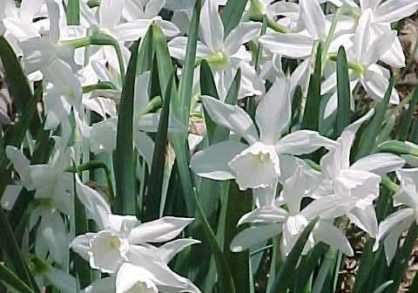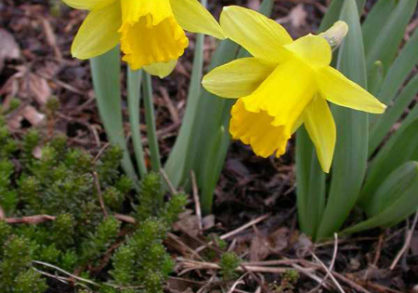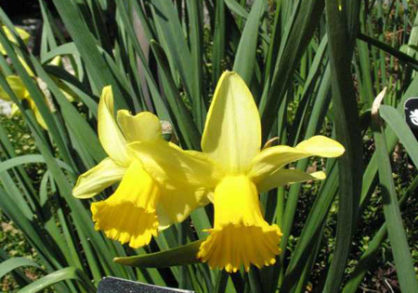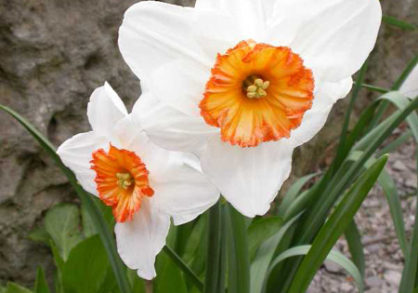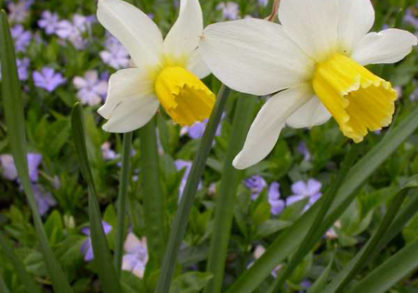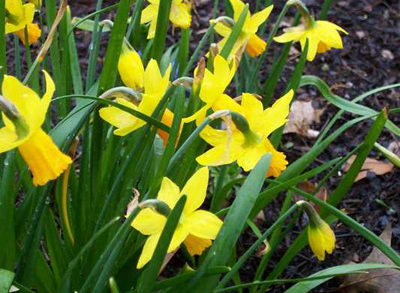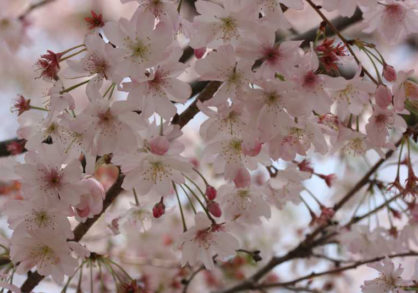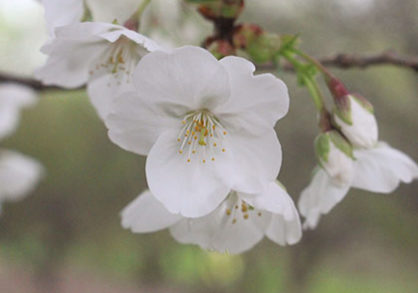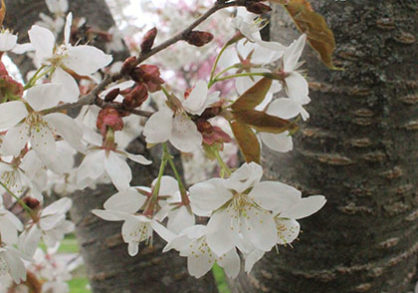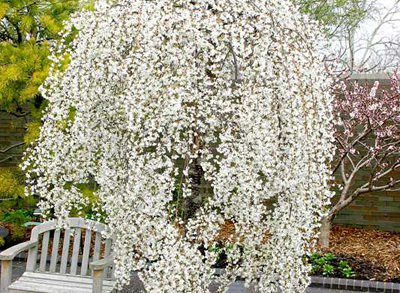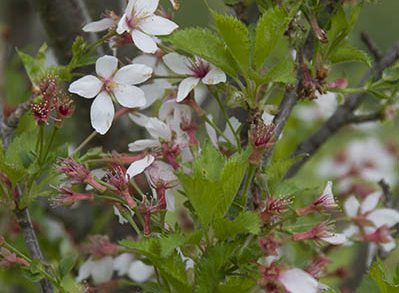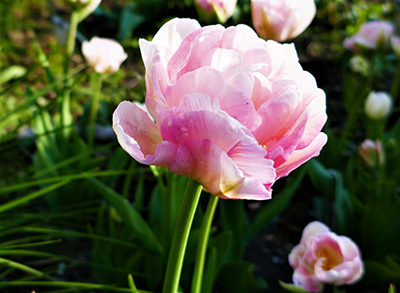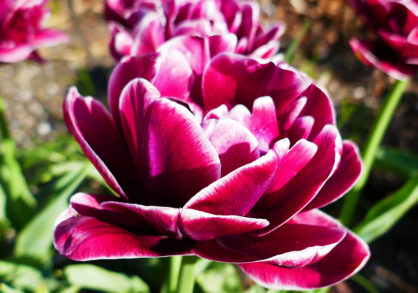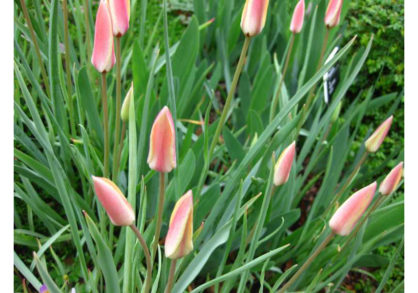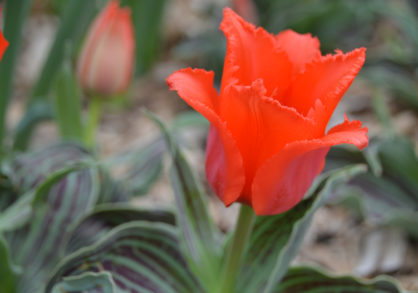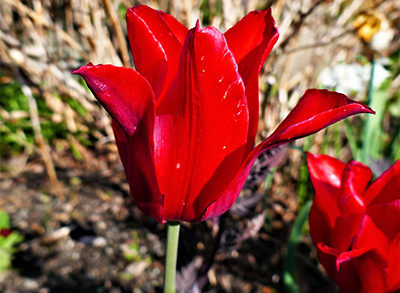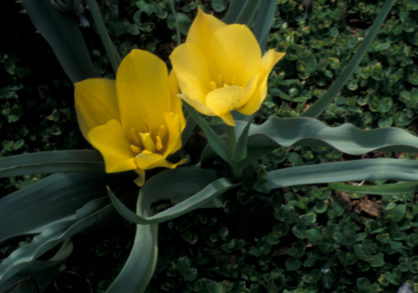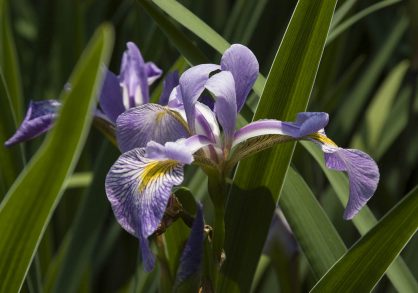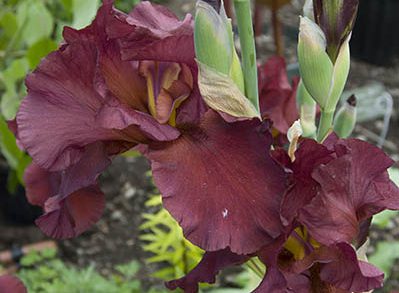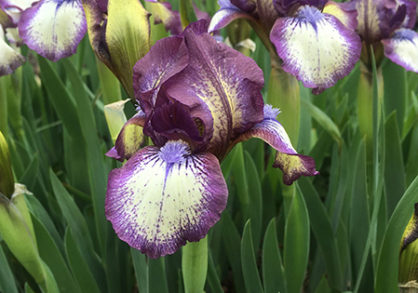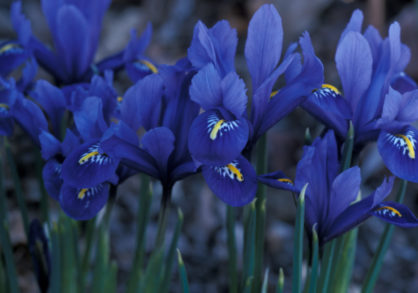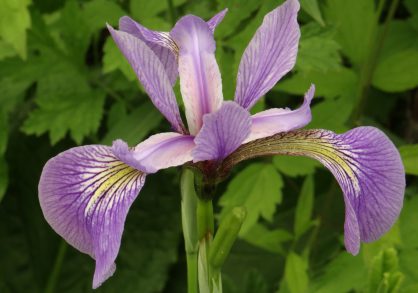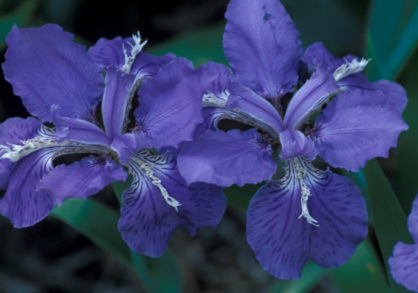Over the course of spring, dormant plants emerge to encounter a roller coaster of weather conditions, ranging from a brisk snowfall to a dry heat akin to late July. Many plants that bloom during this tumultuous transition between winter and summer have come to signify hope, rebirth, and renewal—including the daffodil, cherry blossom, tulip, and iris.
Daffodil
The more than of 100,000 daffodils that bloom throughout our gardens and arboretum in April serve as harbingers of spring.
For many, daffodils denote one’s ability to change and start anew. This symbolism is associated with the daffodil’s ability to grow from underground storage tissues, or bulbs. As daylight lengthens in spring, the daffodils use energy stored in their bulbs to send up leaves and produce roots. Within a few weeks, a bright yellow or orange flower brightens a muted landscape.
Fifty-six varieties of daffodils grow throughout the arboretum and gardens around the welcome center, presenting swaths of color around Conifer Slope, the Young Flower Garden, Groundcover Collection, Bioswale, Hillside Garden, and Winter Garden.

Cherry Blossom
Another harbinger of spring—flowering cherries—blooms shortly after daffodils emerge.
As Japan’s national flower, cherry blossoms, called “sakura,” are widely celebrated in Japanese culture. There are at least 15 species of flowering cherries native to Japan, with hundreds of varieties cultivated by people over centuries.
As one of the earliest spring blooms, they are often considered a symbol of renewal, representing the promise of new beginnings. Because of their short bloom time, they also symbolize the ephemeral nature of life. Cherry blossoms embody the Japanese philosophy of “wabi-sabi,” a world view centered on the acceptance of transience and imperfection, as well as gentleness and kindness.
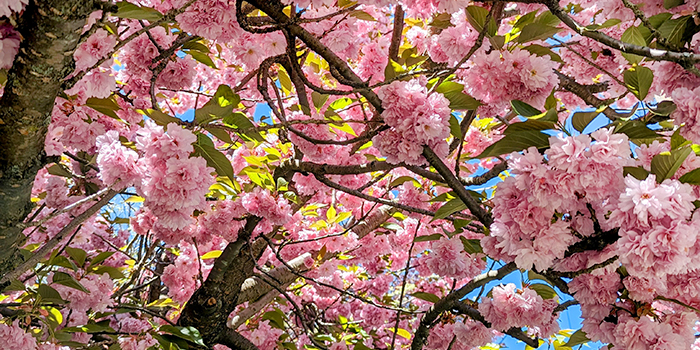
Tulip
Like daffodils and cherry blossoms, tulips have been associated with different meanings throughout history. Because tulips are one of the earliest flowers to bloom in spring, they represent rebirth and new beginnings. It is not unusual to see tulips included on a decorative cremation urn, serving as a reminder that death offers new beginnings or continuation in some form.
Tulips have been cultivated for hundreds of years for their beauty and powerful symbolism. From late April to early May, dozens of varieties of tulips are in bloom in the Young Flower Garden. An illustrated outdoor booklet is displayed, which traces how the tulip’s symbolism and meaning evolved as it spread from its wild origin in Central Asia through the Middle East, Europe and beyond to become one of the most cherished plants in the world.

Iris
The blooms of irises span the colors of a rainbow. In Greek and Roman mythology, the goddess Iris, whose name means “Eye of Heaven,” traveled her rainbow bridge between heaven and earth as a messenger of the gods. This association with a goddess earned the iris its status as something sacred and came to represent trust in the divine and the hope for better things to come.
The blue iris is most closely associated with faith and hope. Its color represents the calmness of the sky and the sea, evoking feelings of trust and optimism. They are a beautiful reminder to keep faith and hope alive.
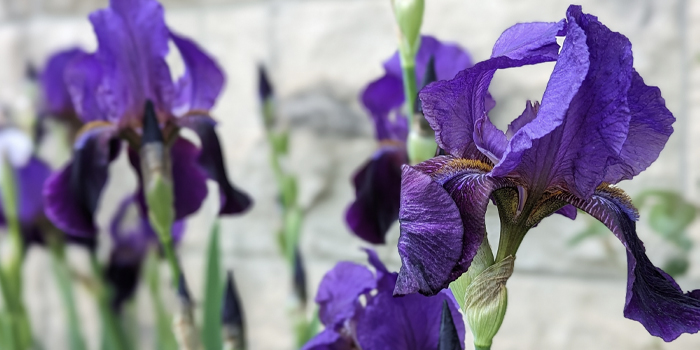
Explore plants in our collections
Whether you are able to visit Cornell Botanic Gardens in person or enjoy our gardens and natural areas from afar, we invite you to explore some of these harbingers of hope in the collections below.
